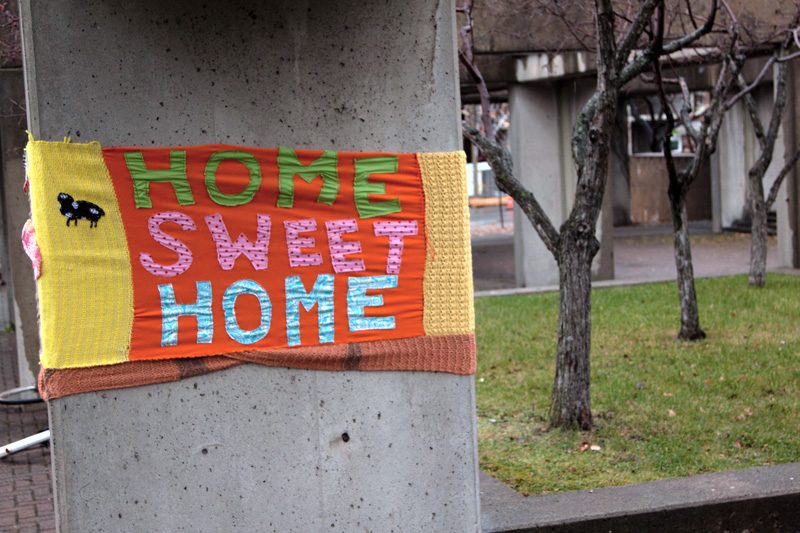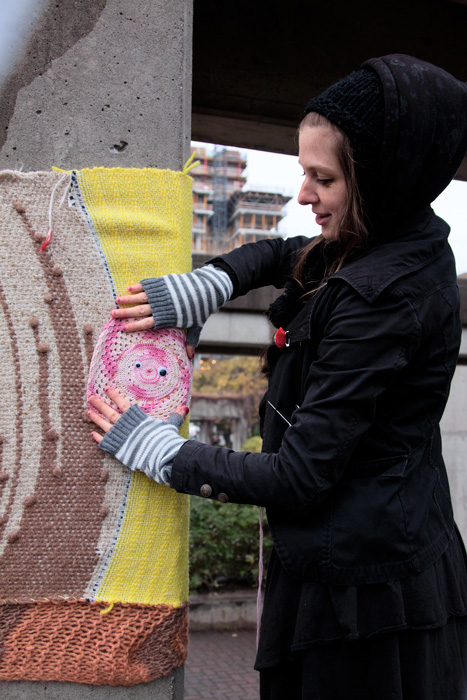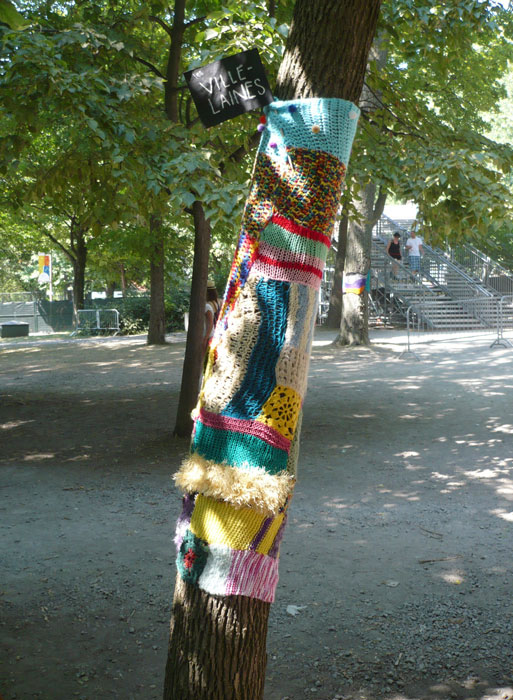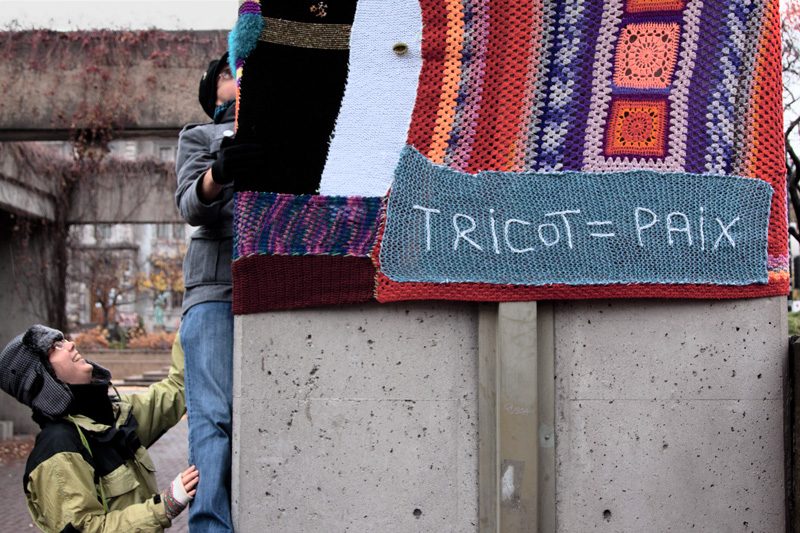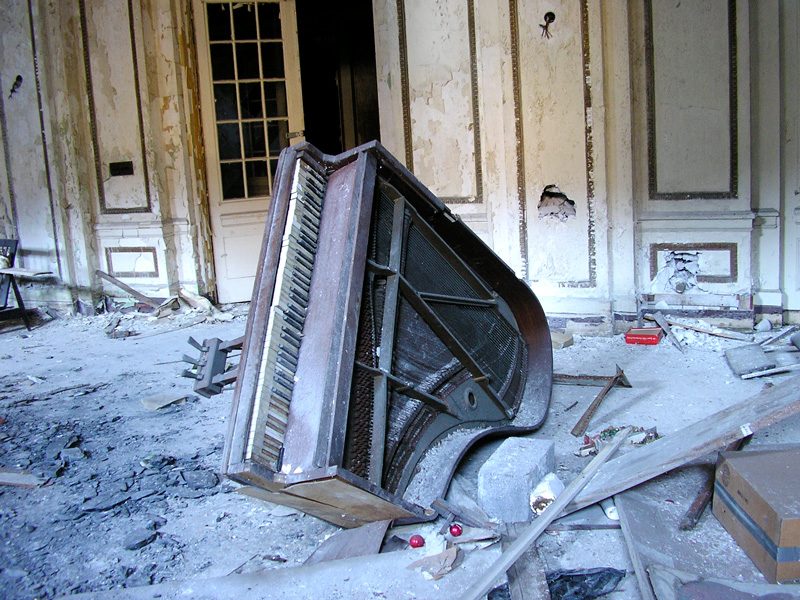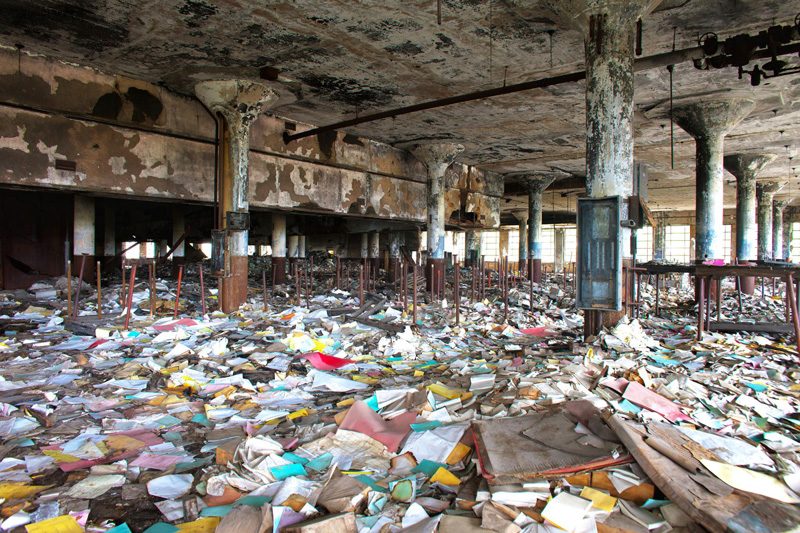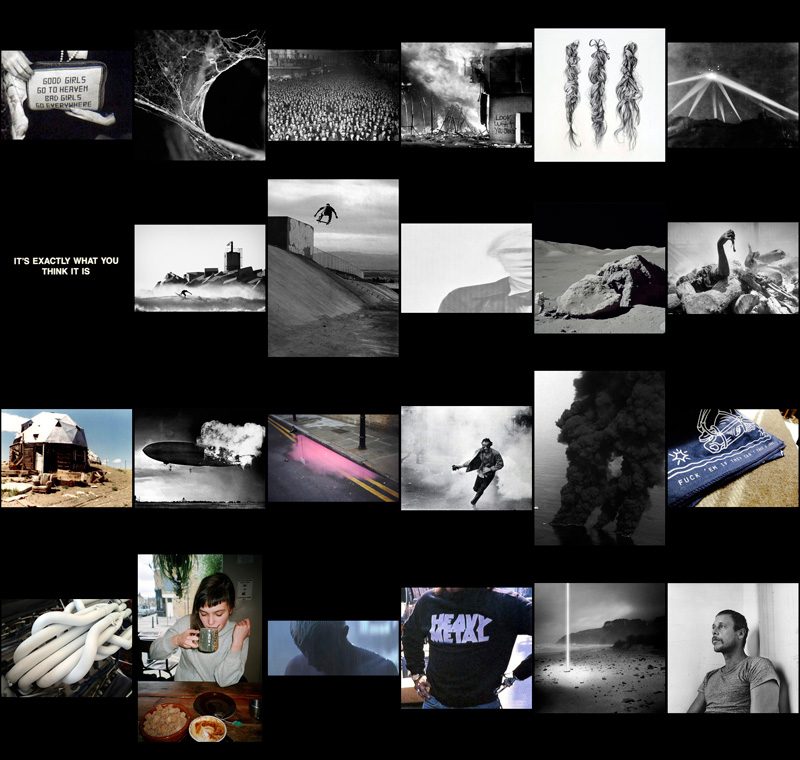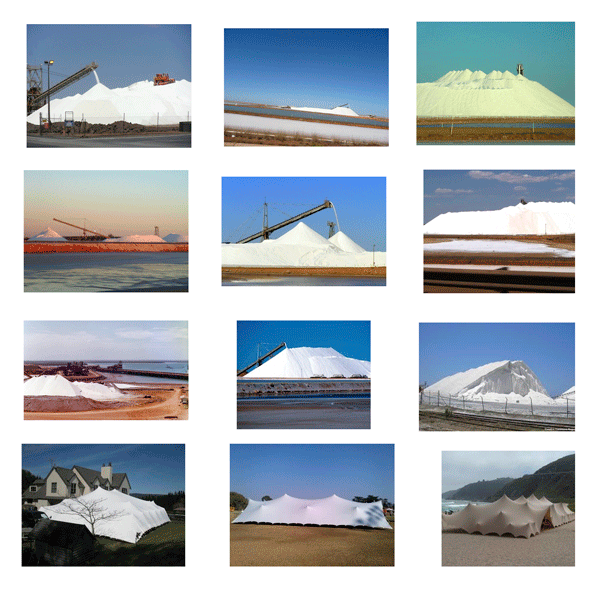[Fall 2013]
Roland Barthes once attempted to define the nature of photography as “a new category of space-time: spatial immediacy and temporal anteriority.” In the photograph, he wrote, was produced “an illogical conjunction between the here-now and the there-then.”1 Some thirty years later, Francis Jauréguiberry remarked that there is always a great deal of elsewhere in our here; he was talking about the portable telephone.2 These two reflections indicate that totally new space-times emerge at certain moments as certain technological devices are developed. Obviously, at the present time, we cannot help but be fascinated by the “categories of space-time” established by digital culture and media networks. I hope here, and this is the intention behind the theme chosen for this issue, cyber / espace / public, to put to the test several conjunctions, hybridizations, or co-occurrences, perhaps not illogical but certainly worthy of attention: correspondences – reciprocities – between geographic and historical here-nows and therethens, between urban public space and cyberspace, between private and public spheres, between image-based art practices and amateur practices.
Photography will guide me in this exercise. In addition to having brought to light temporal potentialities that were unknown before its advent, this technical medium has greatly contributed, and is still contributing, to the possibility, or the chimera, of exact knowledge of the world through images, in correlation with various modes of transportation and methods of communication – the former having emerged, like photography, from the industrial revolution. Photography is not the first method of mobile representation (printmaking preceded it), but it has a surprising capacity to win belief while intruding everywhere.
Forming a sort of globalized anthology, an innumerable and evergrowing collection of images, photographs are now largely public, following a logic inverse to that which led to the invention of the photo album, the function of which was first for family viewing – sharing in privacy. On the Web, as we know, the public and private spheres are increasingly interpenetrating and merging. The dynamics of elite art and those of mass culture are tending to evolve analogously, each mirroring the other, in a stunningly reflexive relationship: fixed images and photographic activity are everywhere; art has appropriated them by imitating their most common uses; through photography, art is in its turn taken back by amateurs; and so on and so forth. Similarly, urban space and cyberspace are increasingly considered to resonate with one another, as actions taken in one space are extended or made public in the other space, often through photographic images.
Many people believed that the advent of the digital image would engender a clean cut that would signal the death of photography. Instead, it is as if images – photographic images in particular – had been waiting for digital code to be able to respond to an ever-growing desire, already present among nineteenth-century observers, to “conquer the entire world by automatically reproducing it.”3 If the entire world is now made visible by its double circulating on the Internet, aside from this proliferation of “online twins” (an expression coined by the architect and media expert William J. Mitchell), other symmetries are being brought to the forefront and developed, through artistic action, in various ways that I propose to examine.
Today, a number of artists intervene in urban public spaces with artworks that are furtive, ephemeral, relational, and participatory – artworks that, although they are made of objects or material components (though, of course, this is not always the case) – present a certain economy of means and leave few traces on the site. On the other hand, these interventions are then transferred to cyberspace, where they continue their journey, taking surprising detours because people browsing the Internet seize upon images published in artists’ blogs and help to disseminate them. This is the case, for example, for Karen Elaine Spencer, who willingly lets people steal the images that she puts in her blogs. Activities by “yarn bombers” also illustrate this constant resonance. These activists knit for various reasons, sometimes simply to warm up unpopular areas of the city, as when Ville-laines tried to bring some comfort to the Agora in Viger Square in Montreal. Installed hastily and without permission, their knit works tend to be quickly withdrawn from public places, but they live on through numerous blogs and, especially, Flickr groups, in which images are propagated and multiply quickly. With yarn bombing and other furtive art practices, things that seem barely public in the urban space –due to either the fleeting presence or the necessarily surreptitious and confidential aspects of certain artistic gestures –become, through the Web, much more present, visible, mobile, and fertile. Flickr groups, of which there are a great number, also form communities of taste, many of which share an interest in art and its objects. These groups come together around works of public art, architectural sites or productions, or particular practices such as street art in all of its forms, or their members claim to be artists themselves, vying for photographic creativity on pages in which photographs made according to specific rules are exhibited – for example, “Places or things that have been abandoned.”4
Whereas Web surfers circulate images of artworks and images of the city, many artists practise another form of correspondence by integrating technological devices into the urban fabric. Screens, small and large, projections, and geolocation instruments – not to mention surveillance cameras and other, relatively hidden devices – have become common in the urban public space, whether they are for ordinary use, for entertainment, or for artistic intentions. Audio steps and video walks, like those by Janet Cardiff, introduce portable devices that allow for a highly personalized experience of or in a public space. A continuum is created between recording and actual space, between technical and spatial motifs, between past and present, and multiple networks that superimpose or overlap space-times are instituted. These networks bring the past toward the present, or the there toward the here – as older technologies such as photography once did – and at the same time complexify the experience: numerous cameras infiltrating the city’s public spaces produce coming-and-going effects that mirror the wanderings of viewers who have become active in sites that are themselves multiplied. Thus, entire cities – such as Markham, Ontario, during the project Land/Slide: Possible Futures – may be taken over by artists, who use various processes and digital media for the purpose of creating open temporalities in the city and its spaces: invading the present of a site that is historic and thus imbued with the past, artists bring to life – even if temporarily – unsuspected pasts, other possible presents, and unprecedented futures with which visitors may interact.
These ways of doing things, in both urban public space and cyberspace, share a common trait: the formation (or the desire to form) communities through exchange and participation, apparently typical of Web 2.0, which is defined as the host of user-generated content and mass collaboration. Analogously, Giovanna Borasi recently proposed the idea of a “version 2.0” of the city because actions by residents and artists, as well as initiatives by individuals or communities, increasingly “are introducing into the urban space a new dialogue among individual actors, groups, crowds, and so on”5 – a conversation that will inevitably continue, be reflected on, and find new instruments and auxiliary networks on the Web.
The extreme circulation of ideas and images has, it seems, signalled the beginning of a new phase of the capitalist economy – what Jeremy Rifkin called the “age of access” – in which corporations control and regulate access to everything. But, at the same time, shared worlds have opened up, and new resistance tactics and types of poaching have come to light.
Although artists insert historic time periods, visions of the future, fictions, and utopias into cities through technological devices, the urban space is completely gridded and then made available in cyberspace by corporations that seem to have made it their objective to capture images of every place in the world. Google Earth and Google Street View are systems based on still digital images, which we could describe as photographs, although Web surfers have the impression that they move because they are interactive. These systems can be used as three-dimensional maps, to situate oneself, or to plan trips, but they can also be used as were series of images produced in the nineteenth century, or as photographic postcards: to see the world and collect all of its facets, all of its views. Through Google Earth, for instance, amateur photographers who upload their images to the Panoramio site (“Share and explore the world in photos”6) see these images appear inlaid in a satellite view as tiny thumbnails that are easy to enlarge by sliding the cursor over them. With such tools, travel photographs, previously reserved for at-home viewing, acquire global visibility, and at the same time Web-surfing photographers feel like they are occupying a bit of the world by “pinning up” the image that they have made of it. These sites and systems – and this was not foreseen by their developers – also make possible a fascinating equivalent to a stroll in the city, which certain artists happily undertake.
Wandering and walking, as well as the “construction of situations,” were proposed long ago as ways to reinvent, or even divert, the everyday. The primary target of these reinventions and possible diversions, first imagined by the Situationists and later by Michel de Certeau, was the urban space. Urban practices – furtive, relational, in situ, and ephemeral, as discussed above – continue or perpetuate these traditions; they also find, very fortunately, other echoes in cyberspace. In the city, people divert spaces; in cyberspace, images and sounds are diverted from their use or their primary site to give them another existence. They can now be seen and heard elsewhere, either on the Web or in more “concrete” public spaces than those where they were originally placed, in otherwise re-edited series opening playful or, more often, critical perspectives on an abundance of materials, reformulated or re-associated in other ways, that tell unique stories. This is the case for selections, random or not, that artists such as Gregory Chatonsky make – often using software that they create themselves – or for the vertiginous sequences of amateur photographs assembled by Dina Kelberman. It is also the case for Dominic Gagnon, who makes films composed with bits of fugitive videos recovered after they were censored by YouTube. Thus, images come and go, sometimes disappearing because deemed inadequate, and Web surfers grab them, extending their life. Jon Rafman, a new kind of walker, wanders through Google Street View as if through cities built of flat images that we believe we are entering as they slide before us. Capturing them as one would take travel snapshots, he returns them to their first state, that of fixed images. All of these gestures resemble what de Certeau called poaching, one of the “thousand practices through which users reappropriate the space organized by the technologies of socio-cultural production”7 – a proposition that remains surprisingly current when it comes to cyberspace.
It is ironic to recall that people once wanted to distinguish photography – a mechanism for “automatically” reproducing things – from “true art” images such as paintings by discriminating between the gestures or actions that bring them to life, between taking and making. Since the 1960s, however, and often using amateur cameras such as the Kodak Instamatic, artists themselves have been taking more often than they make. For these artists, cyberspace, like other media, and similar to the city or other territories, has become a space for wandering in which they can capture images. What Douglas Huebler said in 1968 – “The world is full of objects, more or less interesting. I do not wish to add any more” – has now become a generalized artistic code of conduct, such that Web-surfing amateur photographers probably produce greater quantities of new images than do artists. But, it must be noted, amateurs seem also to gorge themselves on appropriation, capturing images that are already made; in a phenomenon that is tending to become more and more widespread, they even grab artists’ images, often to “remix” them, sometimes to offer their own interpretation or re-enactment.
All of these actions and interactions, these ways of doing things, form a public space that is augmented or dilated, interconnected, multiple, and composite. And in this space, through which two definitions of the public sphere – one, site of exchanges and debates, rather political and relatively immaterial or de-spatialized; the other, physical, situated public spaces – that have been kept more or less separate seem to be bound to connect, it could become difficult to distinguish art from non-art. Considering all these actions of taking and selection, appropriation, diversion, drifting, multiplication, arrangement, and editing, how, in effect can we still claim ownership of images, to declare ourselves their author? In fact, Joan Fontcuberta recently stated, in the pages of this very magazine (CV93, winter 2013), echoing Huebler’s statement, “I think that the question of the status of the artist, the creator, requires an environmental, ecological response: we must stop producing new images and, instead, recover and recycle existing images,” and “Our only hope may reside in the photography without qualities made by amateurs in vernacular domains” – material that, in fact, many artists have captured.
The extreme circulation of ideas and images has, it seems, signalled the beginning of a new phase of the capitalist economy – what Jeremy Rifkin called the “age of access” – in which corporations control and regulate access to everything. But, at the same time, shared worlds have opened up, and new resistance tactics and types of poaching have come to light. For, as Lev Manovich has noted,8 if remix culture and Web 2.0 are part of a certain way for inhabitants of the cities defined by de Certeau to extend ways of doing things, it is their inherent dynamic and energy, their unpredictable side, that poses a true challenge to art. Translated by Käthe Roth
1 Roland Barthes, “Rhétorique de l’image,”in L’obvie et l’obtus. Essais critiques 3 (Paris: Seuil, 1982), pp. 35–36. This essay was first published in the magazine Communications in 1964.
2 Francis Jauréguiberry, “De l’appel au territoire comme effet inattendu de l’ubiquité médiatique,” Espaces et sociétés, 74–75(1993): pp. 117-133.
3 Éric Michaud, “Daguerre, un Prométhée chrétien, ” Études photographiques, 2 (1997): 57 (our translation).
4 http://www.flickr.com/groups/abandoned/. It should be noted that dissemination of images published in blogs or on Flickr is often encouraged by the use of Creative Commons licences.
5 Giovanna Borasi, “Ville 2.0,”in Actions: Comment s’approprier la ville, ed. Giovanna Borasi and Mirko Zardini (Montreal: Canadian Centre for Architecture, 2008), pp. 25–26 (our translation). http://www.panoramio.com/.
6 Michel de Certeau, L’invention du quotidien. 1. Arts de faire (Paris: Gallimard, 1990), p. xl (our translation).
7 Lev Manovich, “Art after Web 2.0,” in The Art of Participation: 1950 to Now, ed. Rudolf Frieling, San Francisco, San Francisco Museum of Modern Art / Thames and Hudson, 2008), p. 78.
www.ville-laines.blogspot.ca/2011/11/square-viger-mission-accomplie.html
www.flickr.com/photos/snweb/with/12379604/
www.blog.flickr.net/en/2013/02/22/thomas-hawk-im-trying-to-capture-1-million-photos-before-i-die/
www.chatonsky.net/projects/all-these-images/
www.dinakelberman.tumblr.com/
www.flickr.com/photos/bridgelucey/4204404969/in/photostream/
Suzanne Paquet is a professor in the Department of Art History and Cinema Studies at the Université de Montréal. She is interested in the sociology of art, photographic studies, and spatial arts: environmental art and land art, landscaping, architecture, and urban planning. For several years she has been conducting research on circulation of images and the inscription of certain types of art in the shaping of space, with an emphasis on the reciprocity between public urban space and cyberspace. She has published Le paysage faconné. Les territoires postindustriels, l’art et l’usage (2009), and edited the thematic section “Reproduire” in Intermédialités (No. 17, 2011) and the collected work Le paysage, entre art et politique (2013).

